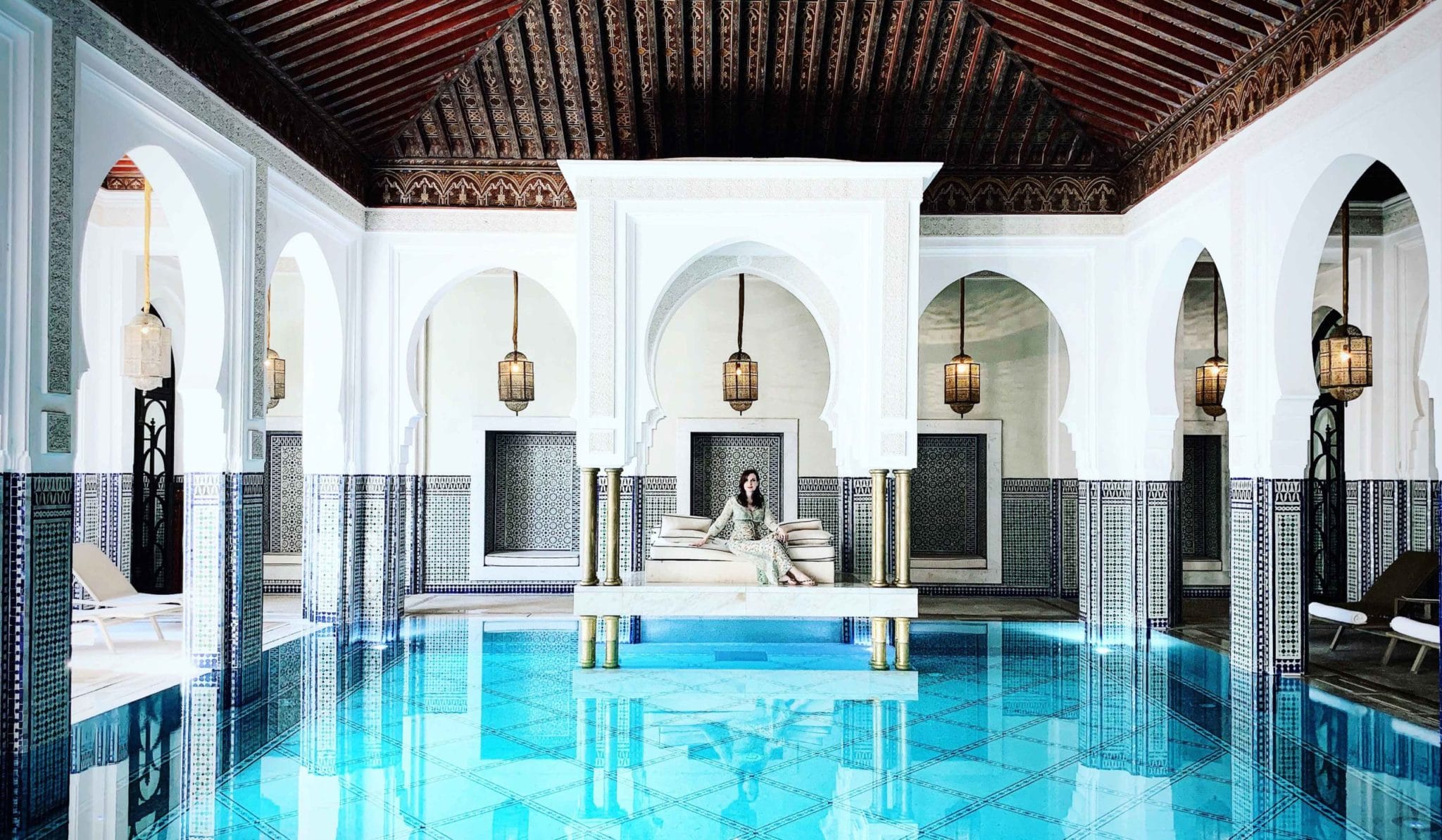Back to basics – the origin of the hammam?
The virtues of the hammam are well known and recognized, yet its origins are too often ignored. Where does the hammam come from, in what country, and what is its history and meaning in the Arabic language? Let’s take a trip back in time to the sources of well-being, relaxation and, above all, hygiene in those days.
Let’s start with the etymology of the word “hammam”, which in literary Arabic means “hot water”.

From Thermae to Hammam – From the Roman to the Ottoman Empire
The inspiration for the Hammam can be traced back to theRoman Empire, which used large spaces to create baths – a place for hygiene, of course, but also a place to meet, socialize and play sports. Although the first thermal baths were private and reserved for a wealthy class, the baths were democratized to enable the whole population to maintain themselves and meet in these baths where a circuit existed to take baths at different temperatures.
The Hammam is said to have been originally used by Turkish warriors to recover from battle. The Hammam was therefore a wellness practice for soldiers, enabling them to release muscular tension and regain the energy they needed during particularly violent assaults.
But a more religious origin is to be noted, with the spread of Islam encouraging meticulous hygiene. Hammam was thus very common in the Middle East.
Incidentally, the other name for the hammam is “Turkish baths”. Originally, these baths were decorated and had small cabins for undressing. In its heyday, a city like Baghdad had 30,000 hammams.
A hammam decorated for men with a succession of rooms
In the early days of the Hammam, it was reserved for men, and consequently the hammam was decorated for men. Unlike saunas and spas, hammams can be customized and decorated to suit individual tastes. That’s why many hammam areas featured warlike decorations such as symbols, but also battle scenes on engravings.
The democratization of thermal baths
As they became more democratic, Turkish baths became open to the entire population, making them an essential part of social life. So much so, in fact, that the colors of the towels were codes for the status of the people you met (single, married, widowed).
Hammam session
A session in the hammam always began with a visit to the “Al-maslakh” room, an area reserved for clothes, close to the showers. From there, you move on to 3 rooms. The first “barid” is an ambient-temperature room designed for bathing in a pool of cold water to prepare the body. In the second room, “wastānī”, the temperature rises slightly to prepare the body for purification. Finally, the last room “ḥarāra” is the most humid and hottest, with temperatures often approaching fifty degrees. In this last room, marble was the material of choice. It was found not only on the floors, but also on the walls. A large stone in the center of the room was used to store heat. It was located just above the “big ovens” that produced the heat needed for the hammam.
Nowadays, with the advent of bathrooms in the home, the hammam no longer serves the same purpose. People go there to cleanse and purify themselves. We do it in the privacy of our own homes. Many hammams have closed their doors.
Today’s hammams retain their social aspect. People often go there to enjoy a moment with friends. But the main aim is to relax, unwind, have a good time and finish off with a traditional cup of tea.


